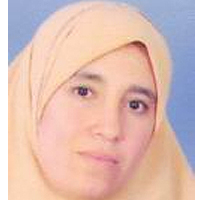Reversal of pure red cell aplasia by varicella zoster virus infection
Published on: 3rd May, 2019
OCLC Number/Unique Identifier: 8163589934
Background: Pure red cell aplasia is characterized by anemia, reticulocytopenia and diminished bone marrow erythroid precursors. It has multifactorial etiology and consequently several therapeutic interventions.
Case: In August 2017, a young patient was diagnosed to have pure red cell aplasia. She was given immunosuppressive therapy for approximately two months but this treatment was stopped due to intolerance. Later on she developed herpes zoster infection that was treated with valacyclovir. Subsequently, it was noted that the patient became blood transfusion independent due to normalization of her hemoglobin and regeneration of the erythroid precursors in the bone marrow.
Discussion: Varicella zoster virus behaves differently from other members of the herpes group of viruses such as cytomegalovirus and Epstein-Barr virus. Two retrospective studies, performed in patients with malignant hematological disorders and bone marrow failure, have shown that infection with the virus may cause stimulation of the three cell lines in the bone marrow and superior overall survival.
Conclusion: The outcome of the patient presented confirms the findings of the two studies showing long-term beneficial effects of varicella zoster virus infections in immunocompromised individuals.
Facial Paralysıs During Varicella Zoster Infectıon in a child
Published on: 23rd March, 2017
OCLC Number/Unique Identifier: 7317595686
Introduction: Primary infection with varicella-zoster virus (VZV) results in chickenpox, characterized by viremia with a diffuse rash and seeding of multiple sensory ganglia, where the virus establishes lifelong latency. Herpes zoster is caused by reactivation of latent VZV in cranial-nerve or dorsal-root ganglia, with spread of the virus along the sensory nerve to the dermatome. Both entities have a benign clinical course in immunocompetent and young individuals. Although Herpes zoster virüs may result in Ramsey Hunt sendrom, it may rarely cause peripheral facial paralysis in the course of varicella.
Case report: A 4-year-old girl patient was admitted to the ear, nose, and throat clinic with a complaint of a rash over the body with vesicles and pustules a few days. She had left peripheral facial palsy about 2 days ago. In a general clinical examination, a few macular lesions, probably residues of vesicles, and fluid-filled blisters and pustules were observed on the back, chest, abdomen, upper, and lower limbs. She had remarkable left peripheral facial palsy. Her facial palsy was assessed as a grade II using the House-Brackmann Score. Otoscopic examination was normal and otalgia and auricular vesicle was absent. 1 mg/kg/day prednisone and 30 mg/kg/day acyclovir therapy were given to the patient due to the peripheral facial nerve palsy involvement of the VZV infection. Complete remission was achieved at 1 month after treatment.
Conclusion: Varicella-zoster virus (VZV) is one of eight herpes viruses known to cause human infection and is distributed worldwide. While the results of bell palsy are good, facial paralysis results during viral infections are severe. Cranial nerve involvement secondary to viral infection should be followed closely. The current standard of care for treatment is acyclovir and prednisone. Thus early treatment can be started in the face of developing complications and possible mortality and morbidity can be prevented.
Antiviral activity of Eucalyptus camaldulensis leaves ethanolic extract on herpes viruses infection
Published on: 13th October, 2017
OCLC Number/Unique Identifier: 7317651634
Eucalyptus camaldulensis (Ec) is considered as a traditional medicinal plant with valuable therapeutic effects. Here we evaluated the antiviral activity of its ethanolic leave extract on different herpes viruses. Vero cells were infected with either of the tested viruses [herpes simplex virus -1 and 2 (HSV-1, HSV-2) and Varicella-Zoster Virus (VZV)] with or without treatment with Ec extract and viral infection development was evaluated by plaque assay. Our results showed significant antiviral activity of the examined extract against all tested viruses. The 80%-MeOH fraction of this extract offered the highest activity against these viruses with 50% inhibitory concentration (IC50) of 0.1±0.08, 0.3±0.02 and 1±0.03 μg/ml against HSV-1, HSV-2 and VZV respectively and 50% cytotoxicity (CC50) at 700 μg/ml. The highest antiviral effect of this fraction was obtained mainly when it was added during and post infection (p.i.) or when it was added only p.i. Also, this fraction significantly reduced the amount of infective endogenous viral particles in cells that were treated with the 80%-MeOH fraction only post viral entry into the host cells. A synergistic antiviral effect against all tested viruses was also observed when cells were treated with a combination of acyclovir (ACV) and 80%-MeOH fraction of Ec. Further study is required for the isolation and identification of the anti-virally active component/s of this fraction.
Herpes simplex virus (HSV)-1 encephalitis can induce chronic anti-N-methyl-D-aspartate receptor (NMDAR) encephalitis
Published on: 27th July, 2018
OCLC Number/Unique Identifier: 7814922521
Herpes simplex virus (HSV)-1 encephalitis is the most common infectious cause of sporadic encephalitis. Despite treatment with acyclovir, HSV encephalitis is still associated with severe morbidity characterized by persistent neurological deficits. HSV encephalitis usually follows a monophasic course, however, some patients might develop relapsing symptoms caused by the formation of auto-antibodies directed against the N-methyl-D-aspartate receptor (NMDAR). Here we present an 82-year-old male patient with HSV encephalitis who developed shortly after his hospital discharge a Post-HSV NMDAR encephalitis, characterized by recurrent epileptic seizures and deterioration of his residual aphasia. First-line immunotherapy with intravenous immunoglobulins (IgIV) was administered and the patient returned almost to his baseline residual deficits of HSV encephalitis. Subsequently, he presented with recurrent relapses of NMDAR encephalitis. Since periodic treatment with IgIV has been started the patient is seizure-free and his neuropsychiatric condition is stable. In conclusion, the recognition of Post-HSV NMDAR encephalitis is very important because neurological manifestations can markedly improve with immunotherapy. Interestingly, in some patients cerebral HSV infection seems to trigger a chronic inflammatory disorder with persistent autoimmune activation which requires chronic treatment.
Acyclovir Induced Acute Kidney Injury: A Case Report
Published on: 13th February, 2024
Herpes zoster ophthalmicus, commonly referred to as shingles, manifests as a painful skin rash affecting one or more dermatome distributions of the trigeminal nerve, which supplies sensory innervation to the eye and its surrounding structures. Acyclovir stands as the primary pharmacological intervention for the treatment of this condition. However, its administration is associated with a notable risk of adverse effects, with acute kidney injury being the most prevalent. Herein, we present a case report involving a 59-year-old female patient who developed acute kidney injury after the prescription of Acyclovir for the management of herpes zoster ophthalmicus. This case underscores the importance of vigilance regarding potential renal complications associated with Acyclovir therapy, particularly in susceptible patient populations.




